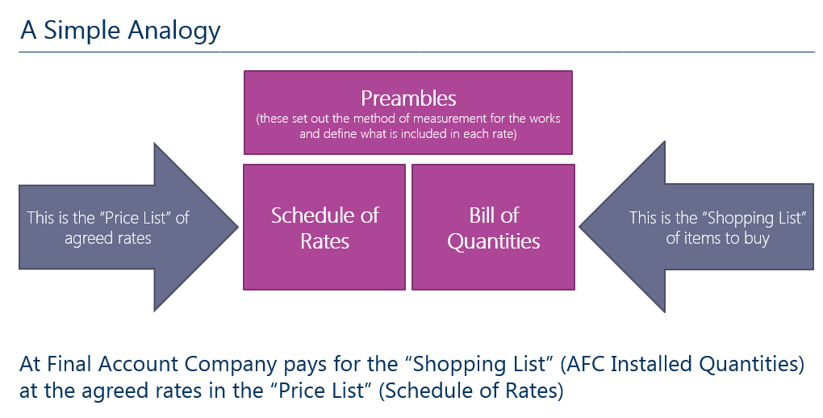Is this the demise of EPC lump sum and a Unit Rate renaissance?
In the last month, Fluor announced its decision to exit competitive Engineering Procurement and Construction (EPC) lump sum bidding for the Energy and Chemicals markets.[1] KBR made a similar announcement a few months ago[2] whilst both SNC Lavalin[3] and Aecom[4] respectively announced their exits from “lump sum, turnkey projects” and “hard bid at risk construction” in 2019.
This change in strategy follows several years of huge losses on lump sum mega projects for large publicly held contractors.[5] As investor focus has intensified contractors have re-evaluated their strategies with many deciding to no longer participate due to the “allocation of risk not [being] appropriately distributed”.[6] At the time of SNC Lavalin’s interim CEO described lump sum contracting as the “root cause” of its performance issues and that the “current model within the industry is broken”.[7]
Is the lump sum model broken?
The complexity and uncertainty of mega projects cannot be overstated. EPC contractors take on risk for the delivery of a project at a fixed price, to a fixed schedule and with milestone payments (effectively funding the supply chain). These projects often involve complex cross border supply chains, the application of new technologies and are at the mercy of events (political, environmental and social). There is a lot of risk and uncertainty to price into the project – a lot can go wrong.
The challenge EPC contractors have previously had is how to effectively execute, manage and price all of these uncertainties (with appropriate contingency reflective of the level of risk) while maintaining discipline at the competitive bid stage to avoid a race to the bottom. For operators / owners, the lowest price is not necessarily the best avenue for the project. Both the owner and contractor need predictability and a return on their investment. If all the contractors are loss-making, then they will retreat from this type of arrangement.
What other options are there for project owners to procure other than lump sum?
Various compensation methods are available to consider during preliminary contracting strategy formulation, typically ranging from a fully Lump Sum Fixed Price arrangement, to a fully Cost Reimbursable.
A Unit Rate contracting basis lies in between and reflects a balanced and structured approach between the level of owner control / risk and information available. In a Unit Rate compensation model, a contractor takes productivity and pricing risk whilst the owner / Company takes scope and quantity risks.

The benefits of a Unit Rate contracting approach include:
Benefit | Unit Rate Approach |
Allows early engagement with the market and opportunity to secure early contractor commitment to yard space and input to engineering | A structured approach to obtaining reliable bids when limited design information is available |
Provides essential data for analysis of any claims/disputes | Cost and manhour data collected at bid stage allows forensic analysis of future claims |
Visibility of cost and manhours for detailed bid evaluation and analysis | Allows complex commercial bid documents to be set up for large scopes and issued electronically |
Reduced tender periods are possible over lump sum bids | Ensures all bidders price in the same format which makes evaluation simpler and quicker |
Pricing anomalies are easily identified | An efficient bid evaluation process which allows detailed analysis of pricing data and interrogation capability |
Supports cost/manhour benchmarking across Company projects where common standard format is adopted | Common structure to Unit Rates across all Company projects allows sharing of benchmark data for future estimating / planning |
Supports conversion to lump sum at contract award or progressively as design is progressed and project risks managed | Structured pricing with full visibility of costs to be able to apply to the final design to agree a lump sum |
A Unit Rate contracting approach also provides the option and flexibility to convert to a structured lump sum basis, at a suitable point in time depending on project engineering maturity.
How can rhi support owners with the selection of a suitable contracting strategy and oversight of their projects?
- We consult on the allocation of risk and selection of appropriate contracting strategies
- Manage the overall pre and post contract commercial process, using our in-house rhicoms Unit Rate contracting system, comprising:
Pre-contract:
- Initial estimate development and benchmarking, through to bid check estimate
- Bid formulation via the development of a Unit Rate (and BoAQ) compensation basis
- Bid process and evaluation comprising a structured approach to bid clarifications, evaluation, normalisation and sensitivities
Post contract:
- Progressive re-measurement of the work scope
- Change control management via the administration of the Unit Rate aspects of the project
- Validation of contractor progress and payments
A Unit Rate compensation scheme is effectively a mixed compensation scheme with preliminaries and time related costs lump sum; variable quantity work on a measured basis; and undefined work on a reimbursable basis with agreed rates.
With the continuing challenge on cost predictability, Unit Rate contracting represents a realistic basis of compensation across large-scale projects regardless of sector, scope and relative complexity.
For further information on rhi’s Unit Rate contracting services and relevant experience, please contact us: mail@rhi-group.com
Article Authors: global managing director, David Paterson and regional director, Mike Moore
